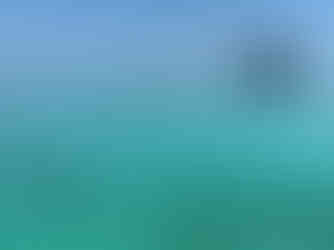Golden Hour: Island Life on Langkawi, Ko Libong, Ko Ngai, and Ko Lanta
- tangio
- Apr 12, 2020
- 14 min read
It’s easy to forget what day it is when you’re traveling for several months (or quarantining for several months…). But drifting from one exotic island to the next between the Malaysian island of Langkawi and the remote Thai Trang islands, it’s easy to forget that there is linear time entirely. For two weeks, we fully melted into the pace of our vacation within a vacation, which felt welcome and timely after being on the fast move for the past seven weeks through Vietnam and Malaysia.
Langkawi, Malaysia
We entered Langkawi on a speed boat that cut through the waters of the Malacca Strait at breakneck speed, while the 100 or so passengers inside sat in movie theater-like seats. There were no outdoor decks, lest we get flung off en route. But that would be the end of our speediness for awhile.

Langkawi is a popular beach vacation spot for Malaysians, with abundant green forests and waterfalls ringed by white sand beaches and views of other islands encircling it. It proved to be a great entry into this island stretch of our trip, since it is quite developed and populated—with trendy beachside bars, hookah cafes, and fresh seafood restaurants that commanded long waits just to get seated—making it an easy transition coming from the city of Georgetown in Penang. And, it didn’t spoil us too much from the get-go, because while everything was good, it was not amazing. The ocean was refreshing, but filled with jellyfish and mini sea ticks, so we typically jumped in just enough to cool down and then ran out. The views were stunning, but it was so hot and humid—easily exceeding 100˚F during the days—that we could barely be outside to enjoy them. The sunsets were colorful, but there were often too many people standing between us and the horizon.

This was all fine, though, because for the first time, we felt no pressure to explore anything, which was truly marvelous and liberating. We knew we were going to spend the next couple weeks on similar islands with less tourists, so we didn’t need to force anything here. The days fell into an easy rhythm: beach, yoga, swim, write, repeat. This might sound easy, but it actually took a lot of strategy and planning because of the heat. It was so hot that we couldn’t even walk on the sand from 11am to 5pm, and we didn’t even think about laying out on the shade-less beaches. We had to go to the beach first thing after waking up, and then we wouldn’t go back till sunset. In the intervening hours, we walked as fast as possible between our air-conditioned guestroom and air-conditioned coffee shops. We were almost grateful that our guesthouse only had cold water showers—a common practice in these parts, we’d soon find out.
Langkawi got us into the island mindset, while keeping us thirsty for the next transition of more remoteness and an even slower pace.
Satun and Trang— Different Kinds of Islands
In order to get to the Trang Islands in the Andaman Sea, we had to hop over to mainland Thailand first from Langkawi (one could go from Langkawi to Ko Lipe, and then Ko Lipe to the Trang Islands, but we chose the mainland route instead). We crossed the Malaysian-Thai border by sea and landed at the small port in the southern Thai town of Satun. Satun intrigued us because, 1) no tourist goes to visit, and 2) it is part of Muslim Thailand, an extension of Malaya up Thailand’s southern tail (Muslims comprise just under 5% of the population of Thailand). This differs greatly from the mental images one conjures when thinking about Thailand, usually with its iconic glimmering Buddhist wats in Bangkok and the north, or its inviting beaches and clear waters in the south. We were eager to explore this different side of Thailand.

To help us, we decided to Couchsurf with a local here. “John,” our 26-year-old host who studies history at a local online college, picked us up from the port in his Honda and generously drove us to run errands and eat at the local night market. Satun was informative in its ordinariness. We enjoyed walking around the nearby Monkey Forest and through the town streets, which were oddly empty, perhaps because of the heat. The mosque was empty, the old Chinese shophouses were shuttered, and the wall murals of cats (reminiscent of nearby Malaysia) had zero people vying for photos. In fact, the only place with people were the 7-Elevens (of which there are many in this region!), since they are well-stocked and frigidly air-conditioned. We spent a fair amount of time both in town and in 7-Eleven (enough time to recognize and get hit on by the cashiers), but most of our time was spent with John.
John welcomed us into his home, a roomy two-story house that he shared with his ailing parents and infant nephew (his sister, the baby’s mother, works at a hotel on the nearby luxury island of Ko Lipe during the week). The house reflected what looked to be a comfortable middle class life, with two bedrooms, a spacious living room with TV (which is actually where the parents and baby slept), an indoor/outdoor kitchen with stovetop and running water, an electrified refrigerator, and an indoor bathroom, also with running water. There were still some Southeast Asian quirks, of course: no plumbing for the toilet, no AC in stifling heat, and sharing the kitchen with many ants and rats. But we were also greeted with plenty of Western comforts, namely in pop culture.

In fact, John’s near obsession with Western music and YouTube videos was almost insatiable. He is an incredibly talented guitar player, self-taught and able to play by ear, and strummed and sang all night for us, switching from hit Ed Sheeran and Red Hot Chili Peppers songs to classic Eric Clapton and everything in between. When he wasn’t playing, his laptop was showing music videos, filling the house with loud concerts as if he imagined starring in the videos himself. John was not only enamored by Western pop culture; he wanted to learn everything about the way of living, politics, health, education, and even games in the United States. He knew about the American two-party system and about Democrats and Republicans, which we personally found impressive. He filled journals and journals with history excerpts that he found online, just to practice reading and writing in English (John mainly hosts Couchsurfers to practice his English). He asked us to teach him poker, which we spent hours doing, using various Thai and Malaysian change as ante. He was thrilled to see American currency and coins, some of which we left for him as gifts.

We were struck by John’s worldliness, talent, intelligence, and kindness, and yet there was also a hint of sadness about him. It was almost as if John knew too much about the world, and thus his place in it. Even though the stability and home that he and his family have in Thailand are already much more than what others in the country have, all he saw was that he would probably never leave rural Thailand and become “rich, with beautiful women around,” as he put it. He spent his days wistfully daydreaming about all the glitz and glamour that he didn’t have, and of which he seemed to believe America and Europe are solely comprised. Who can blame him, given the glowing videos and shallow social media posts that fill his days? It almost made us angry at the pervasiveness of this media; for John at least, they perpetuate a longing for a false reality and causes more dissatisfaction with his own life than if he had never seen them. He constantly asked us to describe just how beautiful a certain thing in America is—such as the cars and houses and clothes—which, of course, we were always measured and careful about doing, describing the range of wealth and inequality that dominate the American reality. We tried to reassure him—that his English was plenty good enough, that the room he generously provided to us was plenty comfortable enough, that his life caring for his nephew and trying to become educated is plenty admirable enough. But there was a pang that he couldn’t shake.
When we said goodbye, John felt so badly that he couldn’t give us anything nice as gifts—even though he had just hosted and driven us around for free for a couple days!—that he gave us two wrapped toothbrushes that he had in his car.
Taking a minivan bus three hours north, we landed in the town of Trang, another nondescript, scorching town of about 60,000 people that serves as the gateway to the Trang Islands. We only spent one day and night in Trang, but we truly enjoyed our high-quality, cheaply priced guesthouse, and the Trang street food markets, which were some of the best we’ve ever encountered. We ate ourselves silly in the bountiful night market, filling ourselves on fried chicken, green curry noodles, pickled and fresh vegetables, “pork milk” satay, and glutinous cake desserts. Before we could even digest all of that, we ran out to the morning market the next day to catch a taste of Trang’s famous moo yang, a mouthwatering crispy pork belly for which the region is known. It was superb. Stomach filled, we were glad that we diverted to the mainland to experience Trang and Satun, which provided us a unique lens into local Thai life—its own type of island that is very hard to reach when visiting Thailand. But now, we were ready to get back to the real islands.
Ko Libong, Thailand

We liked Ko Libong before we even set foot on it. To get there, we had to hop on a minivan bus from Trang to the small dock at Hat Yao Pier over an hour away, where we then had to wait until there were enough people to fill a longtail boat. After about 45 minutes, a group of locals showed up, along with a literal boatload of provisions for what we presume was a small restaurant or hotel that they run on the island. We sat down in the low boat next to packages of Cokes, toilet paper, vegetables, and raw chicken; watched a few local guys expertly tie up a motorbike on the small boat deck; and then took off across the Andaman Sea with about ten other local men and woman, pulling the plastic deck covers shut to avoid getting completely wet from the high sea spray. We were the only tourists heading to the island.
One of the less-visited and locally populated Trang islands, the 13.5-square-mile island of Ko Libong comes into view as a long white piece of seemingly uninhabited land, with low-lying marshes and mangroves along the shore. The receiving dock is just a few wooden planks hanging over the water; a couple tuk-tuks with sidecars wait there to transport the few tourists who land there each day. We hopped in with the first woman tuk-tuk driver we had ever seen, and enjoyed the 30-minute ride to our bungalow on the other side of the island.
With mostly just motorbikes, tuk-tuks, and bicycles on island, Ko Libong’s three main “roads” are basically golf cart paths. There are no traffic signals or stop signs, since none are needed for the small local population of about 4,000 and the small amount of tourists who are on the island at any given time. Small street-side restaurants, juice stalls, and a mosque line the tiny “town center,” while farms of planted rubber trees dominate the fields beyond, their thin lines of distinct white latex dripping into small bowls attached to the trunks. Just one day on a motorbike was enough for us to explore the entire island, visiting stunning rock formations and beaches on the northwest coast and searching for dugongs on the southeast shore. Dugongs are marine mammals similar to manatees, and they are classified as vulnerable to extinction; allegedly, about 80 of them live in the waters surrounding Ko Libong, though we were not fortunate enough to spot any at their regular hang-out cove. As consolation prize, though, we caught amazing views of far-off islands, hazy like mirages in the water, and had a fun obstacle-course hike through exceptional mountain caves and rotting boardwalks.

Just a handful of small resorts dot the southern corner of the island, though they are not five-star by any means. Most range from basic rustic huts to slightly more upscale rustic huts. Our bungalow on the southwest beach was simple, with a concrete floor, a blanket-less bed and a clothes rack with no other furniture, and another cold-water-only shower. But it had AC, and again, that was key for the sizzling days on Libong. The days passed lazily in the bright heat. Masseuses waiting for customers in their beachside massage huts splayed out on their shaded beds, sluggishly fanning themselves; large monitor lizards across the property laid still as a rock in direct sunlight, absorbing the heat into their scaly skin. Fortunately, this also meant that we had an empty beach and its cooling waters all to ourselves, so we dipped into the ocean whenever we got too hot and needed a break (from…what, relaxing?).
At nights, we enjoyed scrumptious fresh-caught fish and crab and overpriced cocktails on the beach, and listened to a handful of other tourists gab around the tiny beach bar. Ko Libong is the type of place that few visitors go, but once they do, they can’t stop coming, returning each year for weeks at a time, competing with each other about who “discovered” the island first, decades or years ago. “This is our eighth time here, how about you?” “We started coming twenty years ago when people thought Phuket was still nice, and now we’re afraid the Phuket tourists will start coming here.” We were the rare newbies on our first trip there. The conversation made us think about which of the many other Thai islands out there are still untouched and waiting to be explored.
Perhaps the thing that keeps people coming back to Ko Libong is the spectacular sunsets, which were truly some of the most magnificent of our lives (even including those on Kauai!). Facing southwest, we relished uninterrupted views of the giant sun each evening, hanging still in the sky like a perfectly round egg yoke, the source of unbelievable heat during the day, yet unbelievable beauty by evening. Its explosions of pinks and oranges and yellows painted the vast skies around it, reaching us in comforting waves across the calm warm waters.
Standing there in the sea alone, peacefully staring at cathartic sunsets, we felt that gentle Ko Libong lure that draws people back again and again.
Ko Ngai, Thailand

From Ko Libong, the southern-most of the Trang Islands, we could see the jagged land masses of several islands off in the distance, including Ko Muk, Ko Kradan, Ko Lanta, and Ko Ngai (also pronounced and spelled Ko “Hai”). Because we could see the entire sea route to our next destination, Ko Ngai, we didn’t expect the ride over to be as magical as it was. But our private 90-minute longtail boat ride from Ko Libong to Ko Ngai was unexpectedly one of the most delightful experiences of our island journey. Time seemed to stop as we were hypnotized by the silky deep blue waters of the Andaman Sea, as if we were inside the slow shutter of a camera, leaving blurred water streaks behind us. Paired with the dramatic limestone formations jutting out all around us, the landscape felt dreamlike.
The surreal feeling only increased as our boat slowed and we pulled into the shallow waters approaching Ko Ngai. The two of us exchanged glances, unable to believe the enchanted cove we had just entered, with iridescent turquoise water and striking island mountains surrounding us. We’re not sure why we didn’t expect it (had we not spent hours Googling images of this island before we decided to come?), but even with high expectations, the reality was profoundly more beautiful than our mental capacity to imagine it.
In many ways, Ko Ngai was the perfect next stage of extreme island life after Ko Libong—even smaller (only 4 km long by 2 km wide); even more rustic (in addition to no hot water, our beach bungalow also had no AC, and no electricity from 9am-5pm, as the generators only turned on at night); even less to do (we walked the entire island, including hiking through the hilly jungle to get to the other side, within a few hours of arriving). There are no roads at all, just a strip of beach acting as the thoroughfare for tourists who comb the short length of the island each day between bars, restaurants, and hotels (some very fancy, which probably did run their generators all day). There is no true local population, as Thais only come to work the hospitality services for tourists. Many tourists who come just visit as part of a day trip from another, more developed island to enjoy the ridiculous waters and beach of Ko Ngai for a few hours; those who do stay overnight often go off on exploratory day trips or diving trips to other islands nearby.

We, on the other hand, didn’t go anywhere. We stayed put on our little cove, continuing that comfortable schedule alternating between sunrises, sunsets, yoga, beach walks, blogging, and swimming (in the “harmless”-jellyfish-infused waters). But mostly, we just spent time staring at the white sand beach, the rocky outcroppings across the sea, and that amazingly clear water. We enjoyed getting to know the tempo of the island: anticipating when low tide would come each morning and afternoon, allowing us to walk far out into the seabed; being careful when high tide would approach each night, eliminating all “walkways” between dinner and our bungalow (we’ve never seen tides affect the landscape of a place as dramatically or as quickly as they do in the Trang Islands); escaping the beach from 3-5pm each day when it swelled with the day tourists, and then peeking back out just as they waded away, back toward their boat. In those twilight moments just after the crowds and before sunset, you could almost feel the island exhale alongside our own extended and relaxed breath.
Ko Lanta, Thailand
The other bookend of our island-hopping journey appropriately mirrored Langkawi in that it brought us back into a larger, more developed environment. Ko Lanta, our next and last island stop, is large at 131 square miles and has a local population of over 30,000 people. It leans more toward the “spring break/full moon mushroom party” side of the Thai islands than the “empty remote island” side. But for us, it was the perfect spot to reunite with a friend, also named Mike, whom we had first met while traveling ten years ago on the Thai island of Maya Bay (where they filmed the movie The Beach), and who was also enjoying extended travels with his family for about three months. Maya Bay was definitely on the party side of the island spectrum, which made sense for our mid-twenties, but now a decade older and with an adorable toddler in tow, Ko Lanta seemed like the perfect mid-thirties reunion spot.
For several days, we shared a two-unit house with Mike, his girlfriend Lizette, and their 15-month-old daughter Lily, tucked into the rubber plantations in southwest Ko Lanta. Our island activities didn’t change much, just the company; in other words, we similarly spent our days motorbiking between wide beaches, grabbing delicious meals at local wet markets, chasing sunsets, and drinking. One ambitious day, we all rented a car and explored the rest of the island, getting to know jungles and beach monkeys at Mo Ko Lanta National Park on the island’s southernmost point; the views and charm of Old Town on the east side; and the stretches of beach bars on the northwest coast, before taking in another breathtaking sunset.

Our most important takeaways from Ko Lanta, though, have nothing to do with island life. The first was the refreshing confirmation that, yes, you can still travel long-term, without set plans, with a baby in tow (albeit a bit less backpacky), expertly demonstrated by our friends. While Mike and Lizette would be the first to admit that it was far harder than they expected to accommodate their 15-month-old while island-hopping, eating locally, and trying to fit in regular activities, what we observed was a curious Los Angeles toddler who learned to take her naps anywhere, whether in the car or across two hard chairs while the rest of us ate lunch at a restaurant; whose taste buds adapted to spicy Southeast Asian street food wrapped in banana leaves; and who did not freak out when aggressive monkeys or giant toads jumped in front of her, or when a strong ocean wave or loud motorbike passed her. Sure, they ate dinners faster than they normally would to get Lily home to bed, and they did not attempt any hardcore hikes, but they were able to balance safety and comfort for Lily without giving up the sense of adventure and learning, while imparting the same to her. It was inspiring for us to see and good validation that we don’t need to entirely give up the way we love to travel if we ever have kids.

Secondly, meeting up with Mike reinforced the power of connecting with travel friends, who automatically feel like kindred spirits, even so long after not seeing or talking to each other. We had met Mike in early 2010, when we were the only ones in our overnight camping group at Maya Bay who jumped off the boat together and who wanted to swim with the bioluminescence at night. We saw him again just once, later that year when he visited us on Kauai, but then not again for almost a decade as we all went about our lives. When we both found out through social media that we were planning to travel again at the same time, and that, coincidentally, we would intersect in Thailand again, we knew we had to reunite. As expected, it was awesome and uplifting. His friends and family easily became our friends and family. It made us think about all the remarkable ways our current world allows us to connect with people across the world, far and wide, whether we’ve known them for a lifetime, or just for a day or two while traveling together years ago.
The shared wanderlust heartset of fellow travelers is one of the strongest connections and foundations we have found, and it’s comforting to be able to access it when we need to, to propel us to keep exploring, keep learning, and keep peering out toward the horizon, beyond the island sunsets.
Karen & Michael
Langkawi and Southern Thailand
January 18 – 30, 2020




































































































Comments